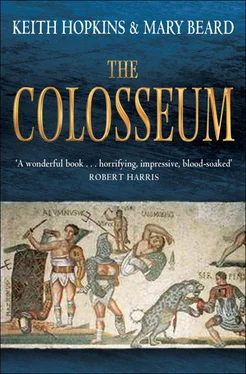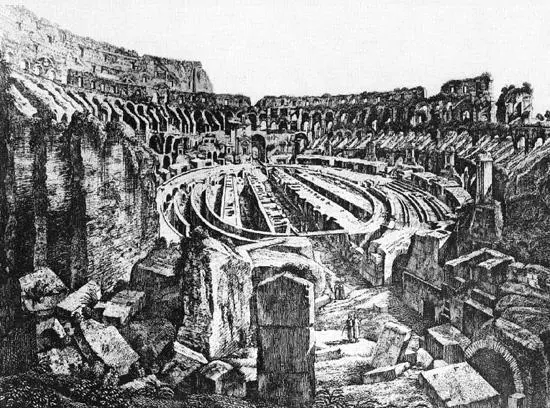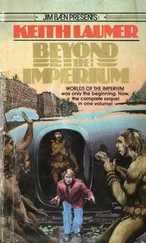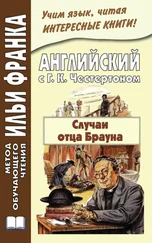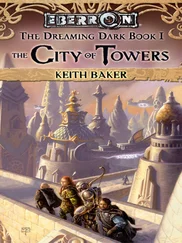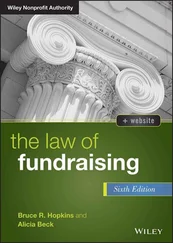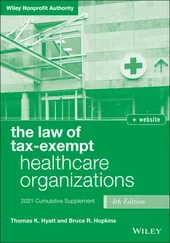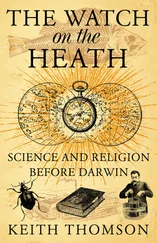awnings (‘vela’) 127–8
boxes 133–4
boundary bollards 127–8
building and design 127–30, 142–8
bullfight in arena, 1332 2, 151, 154–5
Christian shrines, monuments and ceremonies 5–7, 13, 103, 164–71
dangers for visitors, ancient and modern 9–10, 114, 116, 135–6
depicted on Olympic medal vi-viii
drainage 142
emperor’s role in 40–41, 49–50, 113–18
end of gladiator and animal shows 152–4
entrance-ways 128–30
etymology 149–50
excavations 138, 171–3
Fascist interventions under Mussolini 13, 173–6, 188
flora 7–8, 177–80
flooding 43–4, 138–42
foundations 146–8
founding 26–35
frequency of use 54–5
Hitler visits 1938 173–5
Illumination 4–5, 19–20
inaugural shows, AD 80 8, 23–4, 42–50
medieval traditions 149–52
model for later architecture 157–8
modern tourism 12–19
necromancy 150–52
nineteenth-century responses 1–12, 169
original appearance and decoration 124, 126, 130–31, 188
‘passageway of Commodus’ 133–4, 188
plundering and ‘quarrying’ 160–62
restorations, ancient and modern 122–4, 154, 166–7, 171
re-use after antiquity 17, 157, 162–3, 170
role in Roman politics 25–6, 38–41, 106–7, 110–12, 117–18
Roman reactions 21–6
seating arrangements 106–111, 131–3
substructures beneath arena 15, 136–42, 171–2
Commodus (Roman emperor, AD 180–92) 82, 101, 114–17, 120, 134
‘condemnation to the wild beasts’ see martyrs
Constantius II (Roman emperor, AD 337–61) 24
Deakin, Richard, Flora of the Colosseum 178–80
Dickens, Charles, Pictures from Italy 8–9
Domitian (Roman emperor, AD 81–96) 61, 114
emperor, role of in Rome 39–41
executions, as mythical ‘charades’ 45–9, 55
Faustina (wife of Marcus Aurelius, died AD 175), rumoured affair with gladiator 82
Fea, Carlo 138–41, 163
Forum, gladiatorial display in 37
‘Frangipane palace’ 163
Gaudentius, ‘architect’ of Colosseum 2, 144
Galen (physician, died AD 199/216) 75–6
Gérôme, Jean-Léon, paintings of gladiatorial combat 14, 56–60, 68, 89, 134
Gladiator see Scott, Ridley
gladiatorial shows,
Christian reactions 120, 153
complexity of Roman reactions 118–121
economics 76, 90–92
end 153–4
organisation and programme 51, 70–73
origins 119
presented by aristocrats 52–3
scale and frequency 52–3, 91–3
standard modern image 55–60
version of military prowess 83
gladiators,
armour 63, 66–71
betting on 56, 72
civic status 76–7
emperors as 78, 114–18
graffiti from Pompeii 71, 81, 86–7, 89
last meal 56, 72
maximum prices 90
object of spectacle 83–4
Priscus and Verus 49–50
rates of death 42–3, 86–9, 93–4
Roman images 63–4, 80
Roman oratory 78, 85–6
senators as 78, 114
sexuality 64–5, 69, 80–83
suicide 53, 84–5
tax on sale, abolition 90, 91–2
tombstones 60–2. 86–9
total numbers 92–3
types 55–6, 60–66 see also Seneca, Tertullian, women
‘Golden House’ see Nero
‘Hail Caesar, those about to die…’ 55, 58–60
Hawthorne, Nathaniel, The Marble Faun 7
Ignatius, Saint (died early second century AD), martyrdom 104
James, Henry, Daisy Miller 10
Ludus Magnus 136, 185–6
McCartney, Paul 17
Marcus Aurelius (Roman Emperor, AD 161–80) 76, 82, 90, 119–20
Martial (Roman poet), Book of the Shows 23–4, 44–50, 66, 96–7
martyrs, Christian 5, 13, 103–6, 164–6
‘Meta Sudans’ 95, 186
Murray’s Handbook to Central Italy 1–9
Nero (Roman emperor AD 54–68) 26, 34–5, 75 ‘Golden House’ 28–32 see also ‘Colossus’
Olympic Games, Sydney vii-ix
Perpetua and Felicity, Saints (died AD 203) 72, 105–6, 130
Pompeii, gladiatorial barracks, armour from 66–8
woman in 82–3
riot in amphtheatre 38, 110 see also gladiators, graffiti from Pompeii
‘Roman fever’ 9–10
Saepta (‘Voting Pens’) 37, 39–40
Scott, Ridley, Gladiator 13, 57–8, 76, 121
Seneca (Roman writer, died AD 65), on gladiators and shows 70–72, 78. 80, 85, 118
Sixtus V, Pope 2, 157, 166
Spartacus (freedom fighter, died 71 BC) 77–9
Stael, Madame de, Corinne 9
Sulla, Lucius Cornelius (Roman dictator, c .138–79 BC) 107–8
Tertullian (Roman/Christian writer, died c . AD 240), on shows and gladiators 47, 72, 119
tintinnabulum , self-castration 64–5
Titus (Roman emperor, AD 79–81) 2, 27–9, 31–2, 42–5, 49–50, 51–2, 61
Trajan (Roman emperor, AD 98–117) 51–2, 61, 88–9, 145
Triumph over Jews, AD 71 27–9
Twain, Mark, Innocents Abroad 10–12, 16–17
Vespasian (Roman emperor, AD 69–79) 2, 26–35
Vestal Virgins 58, 107, 134
Virgil (Roman poet, 70–19 BC), ‘architect’ of Colosseum 149
‘Voting Pens’, see Saepta
Wharton, Edith, ‘Roman Fever’ 10, 189
women, as animal hunters 44
as gladiators 75
This is a small series of books that will focus on some of the world’s most famous sites or monuments. Their names will be familiar to almost everyone: they have achieved iconic stature and are loaded with a fair amount of mythological baggage. These monuments have been the subject of many books over the centuries, but our aim, through the skill and stature of the writers, is to get something much more enlightening, stimulating, even controversial, than straightforward histories or guides. The series is under the general editorship of Mary Beard. Other titles in the series are:
Published
Geremie R. Barmé: The Forbidden City
Mary Beard: The Parthenon
Simon Bradley: St Pancras Station
Iain Fenlon: Piazza San Marco
Cathy Gere: The Tomb of Agamemnon
Simon Goldhill: The Temple of Jerusalem
Rosemary Hill: Stonehenge
Robert Irwin: The Alhambra
Richard Jenkyns: Westminster Abbey
Keith Miller: St Peter’s
John Ray: The Rosetta Stone
Gavin Stamp: The Memorial to the Missing of the Somme
Giles Tillotson: Taj Mahal
David Watkin: The Roman Forum
Forthcoming
Gillian Darley: Vesuvius
David Drew: Machu Picchu
Llewelyn Morgan: The Buddhas of Bamiyan
John Ray: The Lighthouse of Alexandria
‘A racy and occasionally confrontational book… revels in the accretions of detail and myth… first-class scholarship and an engagingly demotic style’ Michael Bywater, Independent
‘A rollicking good read… the authors’ lively style does full justice to their rumbustious subject matter’ Guardian
‘The authors wear their eclectic learning lightly… exemplary prose… quiet, confident and thorough, this is a fine English book in the best sense of the word’ The Times
Читать дальше
